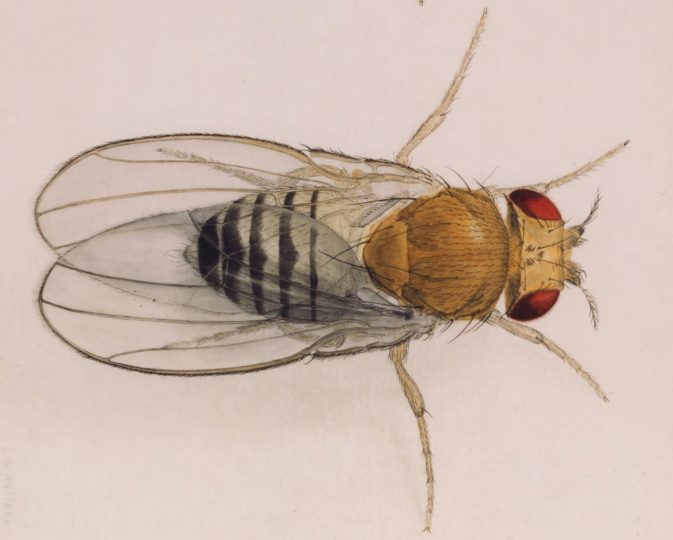Species typically evolve over the course of eons, but researchers at the University of Minnesota have developed a way to do it in less than a year. A team of scientists led by Mike Smanski, Ph.D., in the College of Biological Sciences (CBS) has generated speciation events in fruit flies so that engineered strains can reproduce normally with each other, but mating with unmodified flies results in non-viable offspring.
This research, published in Nature Communications, provides the foundations for scientists to be able to prevent genetically modified organisms (GMOs) from reproducing with wild organisms. Additionally, the research will allow scientists to develop new tools to control populations of disease-carrying insects and invasive species in a highly targeted fashion.

Image credit: Carnegie Institution for Science
“Speciation is a fundamental process that drives how life evolves on this planet. Gaining engineering control over speciation will impact our ability to control pests that spread disease, harm crops or degrade the environment,” said Smanski, a study author and professor in CBS. “This is one of several new approaches to pest control using modern genome-editing tools to essentially convert the pest organism into the pesticide. Any time our engineered flies attempt to reproduce with wild flies, there are no offspring. This allows it to function like genetically-encoded birth control for pest organisms.”
Their approach, termed Engineered Genetic Incompatibility (EGI), begins by using CRISPR/Cas9 to introduce harmless mutations into regulatory regions of DNA next to those that encode proteins. Scientists then introduce a gene-activator that looks for the original DNA sequence. When the engineered strain reproduces with a wild strain, the offspring will inherit a copy of the original sequence from their wild parent and a copy of the gene-activator from their engineered parent which causes over-activation of the wild gene copy, resulting in non-viable offspring. This method can also be used for transgene biocontainment.
“EGI will prove to be an invaluable tool for the safe use of GMOs. One of the risks of GMOs is the spread of transgenic material into wild populations. However, any genetic components contained within an engineered species are trapped within that species,” said study co-author Nathan Feltman, a CBS graduate student in the Smanski Lab.
This research builds on the team’s prior work in yeast, which study co-author Siba Das — a postdoctoral scholar in the Smanski Lab — states marks a paradigm shift in how scientists look at engineering speciation events and how it is possible that it can be fine-tuned for desired applications.
“Engineering speciation events has been a long-standing biotech goal and we are very excited to begin applying this method to major challenges in human and environmental health,” said study co-author Maciej Maselko, Ph.D., a Research Group Leader at Macquarie University in Australia.
Source: University of Minnesota
